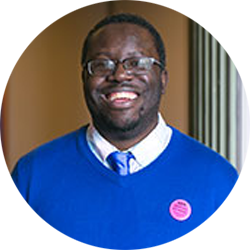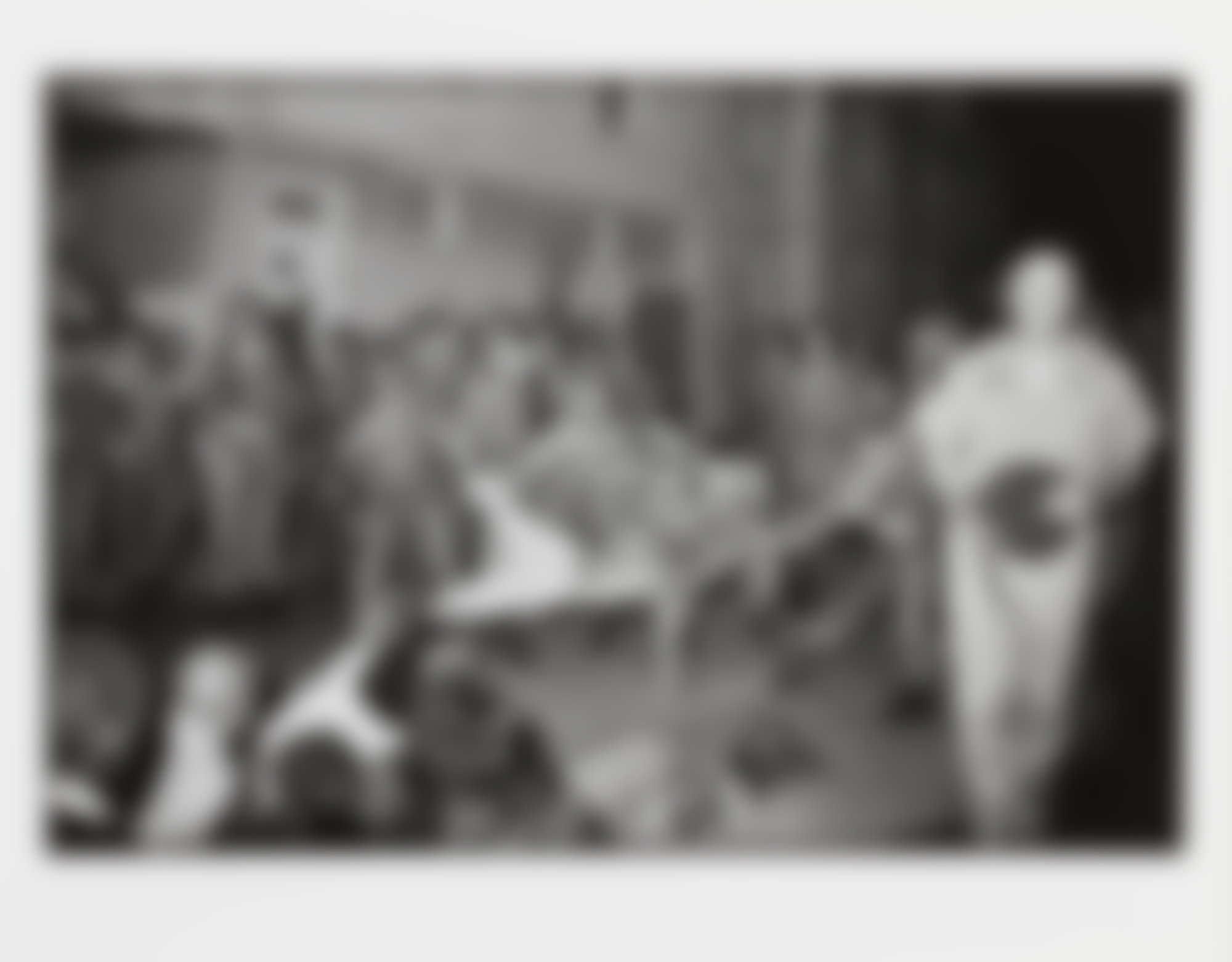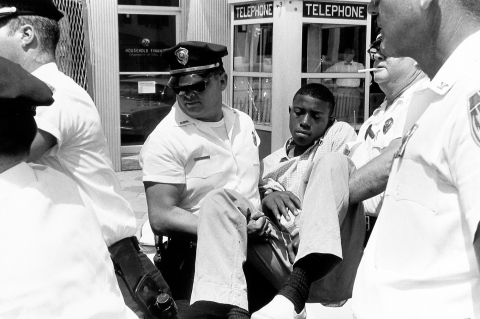This is a response to UMMA's collection of Danny Lyon's documentary photographs taken during the Civil Rights movement protests in the 1960s. UMMA’s May 29 edition of Art In Your Inbox included a photograph from the collection showing a protester being violently pulled from a peaceful crowd by law enforcement.
 Austin McCoy is assistant professor of history at Auburn University. His research focuses on 20th Century U.S. political history, African-American history, and social movements and political organizing. He earned his PhD from the University of Michigan in 2016.
Austin McCoy is assistant professor of history at Auburn University. His research focuses on 20th Century U.S. political history, African-American history, and social movements and political organizing. He earned his PhD from the University of Michigan in 2016.

Click above to see image
Warning: Contains Graphic Content
Click here to view the May 29 edition of UMMA's Art In Your Inbox
Danny Lyon’s photo of national guardsmen pulling SNCC photographer Clifford Vaughs away from civil rights protesters (right) reminds me of when I first saw images of police officers dressed in military gear confronting demonstrators protesting the death of Michael Brown in Ferguson in 2014. I remember how images of protesters staring down law enforcement perched on military-style vehicles not only shocked viewers, but stirred the conscience of many who eventually supported the burgeoning Black Lives Matter movement.
The image of Vaughs is not quite as deadly as the video of Minneapolis police officer Derek Chauvin kneeling on George Floyd’s neck until Floyd descended into unconsciousness, nor the recently surfaced footage of Aurora police subduing Elijah McClain as he desperately sought to prove that he was not a threat. However, Lyon’s photo reminds me that Black people in the United States are always living on the brink. While this photo does not capture the outcome of this tug of war between protesters protecting Vaughs and the guardsmen attempting to take him into custody, this snapshot of another Black person on the brink of harm. Again, I am reminded how wrongful and premature death stalks Black people and how Black people are willing to risk their lives in an effort to change this reality.
Danny Lyon and the Civil Rights Movement
When I see all of the guardsmen carrying their bayonetted rifles and wearing their gas masks in Lyon’s picture, I see Philadelphia police shooting tear gas at protesters trapped between the freeway and a fence. Secret Service agents using tear gas and the U.S. Park Service forcibly pushing back protesters in Lafayette Park to clear a path for the president to walk to his photo op in front of St. John’s Church is also part of the legacy of anti-Black state violence Danny Lyon captured on that day in May 1964.
Like Lyon’s photo, or video footage of Bull Connor siccing dogs on civil rights protesters, contemporary scenes of state violence against Black people and protesters might politicize viewers and inspire them to adopt an activist life. When I think of national guardsmen dragging Vaughs, or police officers in New York City and Detroit drive their cars through protesters, I am reminded how such imagery often mobilizes people to act, whether though organizing zoom conversations about state violence with others in their community, marching in the streets, or conducting research about the militarization of police departments.
Some who may think dealing with disruptive protesters with a heavy hand can restore order often forget that images of state violence can radicalize people. While Black, Brown, and Indigenous folks are killed disproportionately by police, repression often provokes more Americans to raise questions about their tactics, training, weaponry, and their overall utility in a self-proclaimed democratic society. Police repression often breeds more resistance.
However, videos and still imagery of state violence against Black and Brown people and protesters is double-edged. These images also disseminate Black pain and can trigger trauma for Black viewers. This contradiction does not undermine the use of photography as a mobilizing tool, but images such as Lyon’s and those we see and watch on our televisions and mobile devices remind me that it is vital to use these pictures to facilitate broader conversations about this excruciating tension within the use and mobilization of Black pain to stir people to action.





![March on Washington, [SNCC members and friends defiantly gather to sing freedom songs], from A group of people marching in protest outside of the Lincoln Memorial in Washington, D.C.](https://exchange.umma.umich.edu/media/W1siZiIsIjIwMjMvMDkvMDcvNjQ5aDR5Y3BrMF9kZWZhdWx0LmpwZyJdLFsicCIsInRodW1iIiwiMTAwMHgxMDAwIl1d?sha=4ceaf60fc17b1647)







